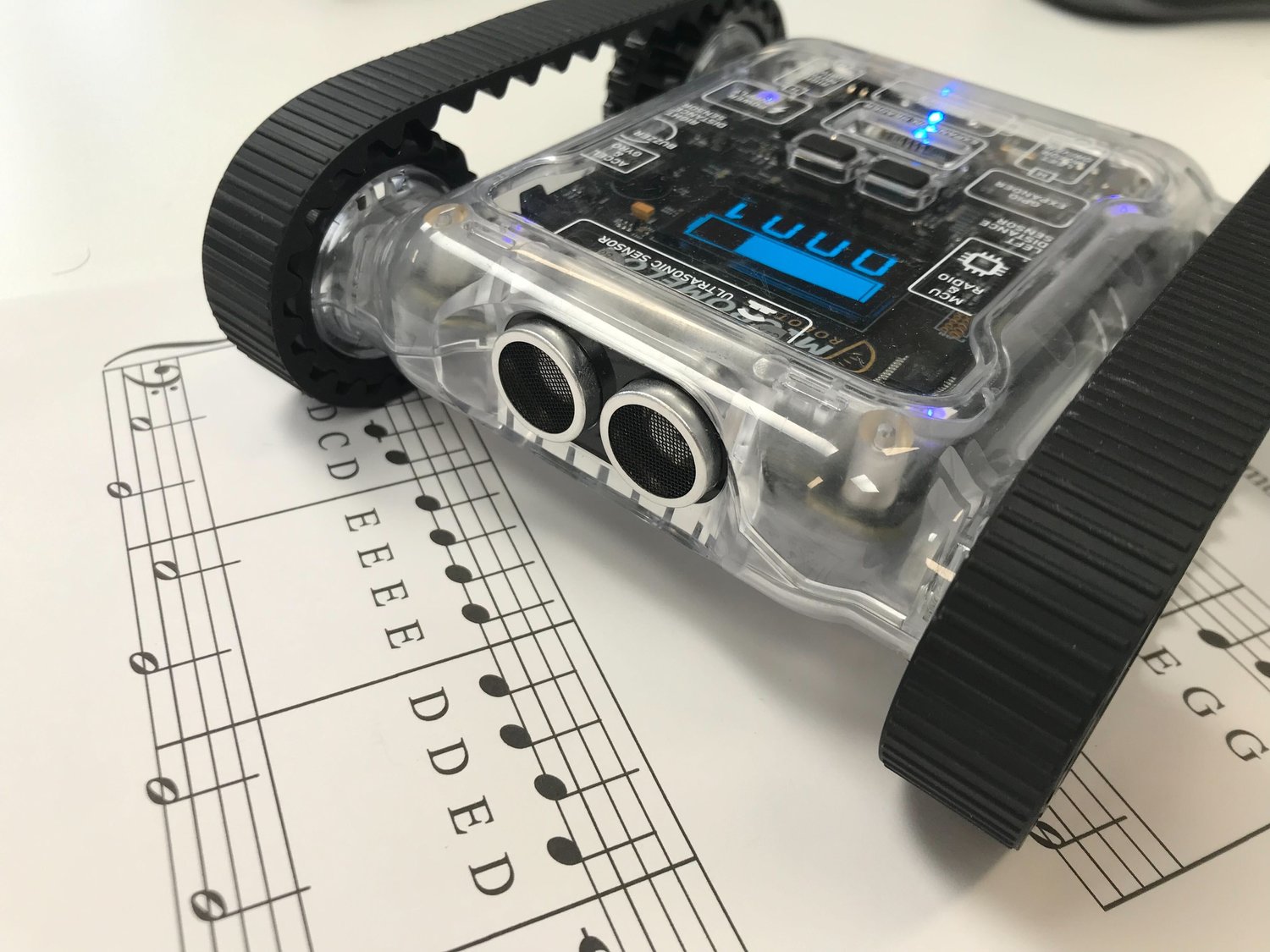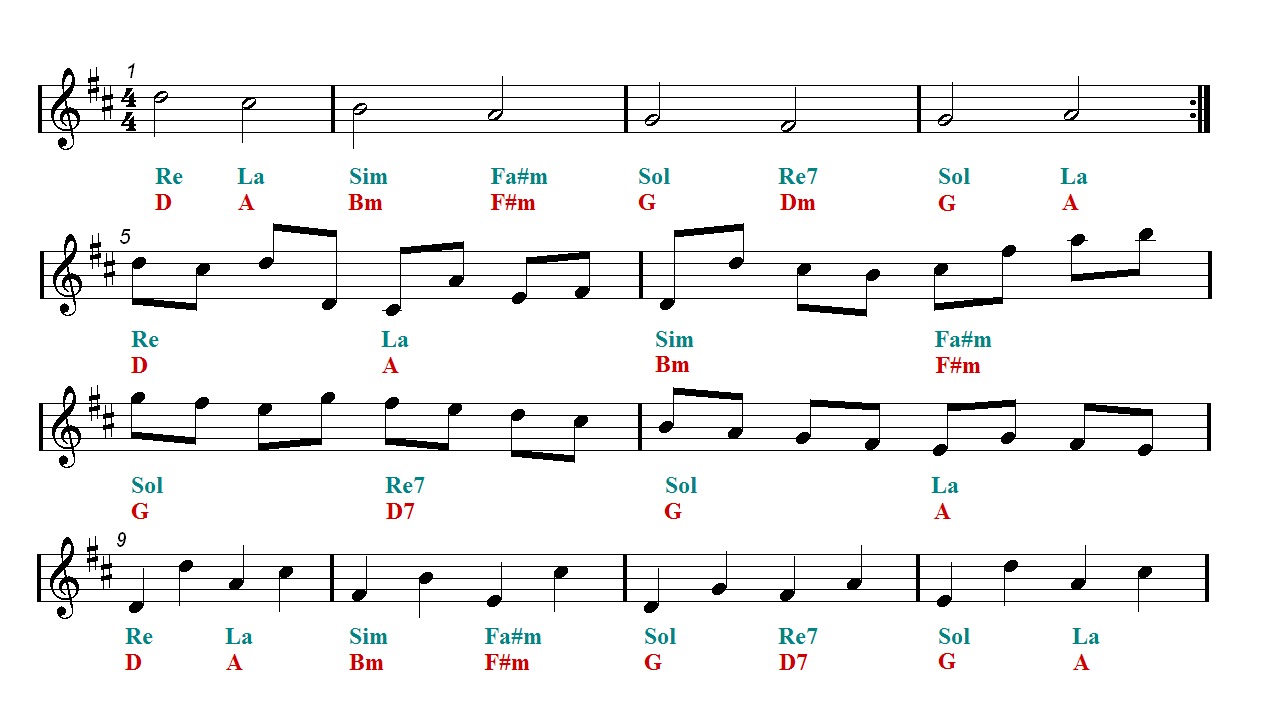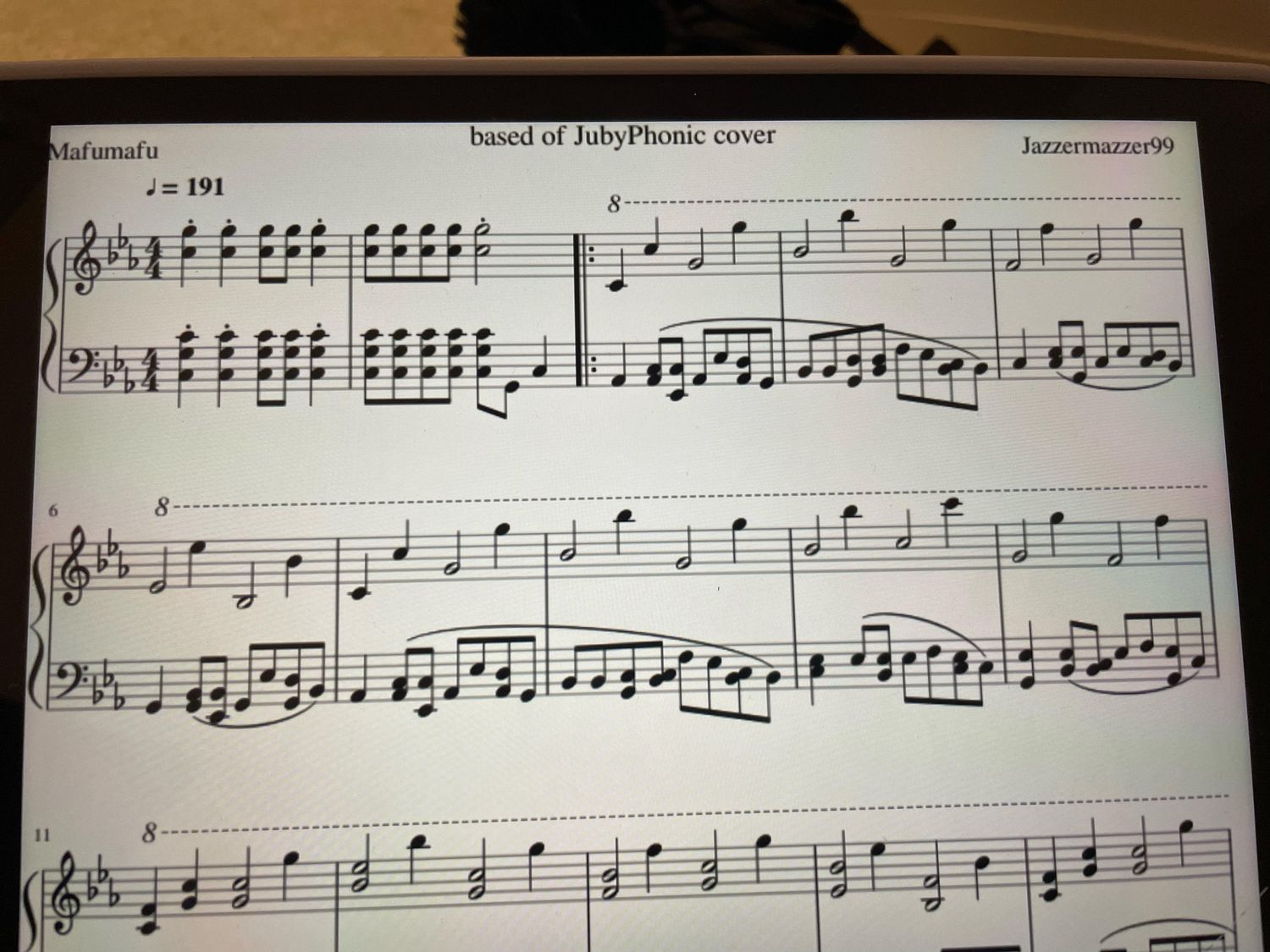Home>Production & Technology>Music Theory>What Is The Correlation Between Music Theory And Coding


Music Theory
What Is The Correlation Between Music Theory And Coding
Published: January 30, 2024
Discover the surprising correlation between music theory and coding. Uncover the secrets of how understanding music theory can enhance your coding skills. Follow the harmonious pathway of creativity and logic.
(Many of the links in this article redirect to a specific reviewed product. Your purchase of these products through affiliate links helps to generate commission for AudioLover.com, at no extra cost. Learn more)
Table of Contents
Introduction
Have you ever wondered about the connection between music theory and coding? At first glance, these two subjects might seem worlds apart. But upon closer examination, you’ll discover fascinating parallels and correlations that can significantly enhance your understanding of both disciplines.
Music theory is the study of the fundamental principles that govern music composition, including concepts such as melody, harmony, rhythm, and structure. On the other hand, coding involves writing instructions in programming languages to create software, websites, and applications.
While they may appear unrelated, both music theory and coding require a combination of analytical thinking, creativity, and problem-solving skills. Additionally, they share a common language of patterns, logic, and syntax.
In this article, we’ll explore how music theory and coding intersect and how applying principles from one discipline can enhance understanding and proficiency in the other. Whether you’re a musician interested in coding or a developer looking to broaden your knowledge of music theory, this exploration of their correlation will offer valuable insights and benefits.
Understanding Music Theory
Music theory is the backbone of musical composition and performance. It encompasses a set of principles and rules that help musicians understand how music works and how to create harmonious and pleasing sounds. Here are some key elements of music theory:
- Melody: Melody refers to the linear sequence of notes that form the main theme or tune of a piece of music. It is the part that we often hum or sing along to and provides a sense of direction and emotion.
- Harmony: Harmony is the combination of multiple notes played simultaneously to create chords and progressions. It adds depth and richness to the melody and establishes the tonal center of a piece.
- Rhythm: Rhythm involves the arrangement and duration of different notes, rests, and beats within a musical composition. It creates the sense of timing, pulse, and groove in a piece of music.
- Structure: Structure refers to the organization and arrangement of musical ideas in a composition. It includes sections such as verses, choruses, bridges, and any other recurring or contrasting elements.
These are just a few of the basic elements of music theory, and each one has its own set of rules and principles to follow. By understanding these concepts, musicians can compose, arrange, and perform music with intention and coherence.
Music theory also includes notation systems, such as sheet music, which allow musicians to accurately communicate how a piece should be played. This standardized system of symbols, lines, and notation helps musicians interpret and reproduce musical compositions with precision.
Moreover, music theory provides a framework for understanding and analyzing different genres, styles, and historical periods of music. It allows musicians to appreciate the work of others, learn from established techniques, and incorporate their own unique ideas and expressions.
Ultimately, music theory empowers musicians to communicate and connect with their audience on a deeper level. It helps them convey emotions, tell stories, evoke moods, and create powerful and meaningful musical experiences.
Understanding Coding
Coding, also known as programming, is the process of creating instructions that computers can understand and execute. It involves using programming languages, such as Java, Python, or HTML, to write code that tells a computer what to do.
Coding is the foundation of software development, web development, and many other technological advancements. It enables the creation of applications, websites, games, and various tools that we use in our daily lives. Here are some key aspects of coding:
- Logic: Coding requires logical thinking and problem-solving skills. Programmers need to break down complex tasks into smaller, manageable steps and use logic to determine the most efficient way to achieve a desired outcome.
- Syntax: Just like music theory has its own set of rules and principles, programming languages have specific syntax and structure. Correct syntax is essential for code to be executed properly and for programmers to effectively communicate their intentions to the computer.
- Algorithms: Algorithms are a fundamental part of coding. They are step-by-step instructions or procedures that solve specific problems or perform specific tasks. Creating efficient algorithms is crucial for optimizing code performance.
- Data Structures: Data structures are the way information is stored and organized within a computer’s memory. Programmers need to understand various data structures, such as arrays, lists, and trees, to effectively manipulate and retrieve data.
Coding also involves debugging, which is the process of identifying and fixing errors or bugs in code. Debugging requires a systematic approach to identifying issues and testing solutions to ensure that the code functions as intended.
Additionally, coding relies on collaboration and communication skills. Many software projects involve teams of developers working together to design, build, and maintain complex systems. Clear and effective communication is essential for successful collaboration and project completion.
Overall, coding is a versatile skill that empowers individuals to create innovative solutions, automate tasks, and build technologies that can have a significant impact on various industries and sectors.
The Correlation Between Music Theory and Coding
Although music theory and coding may seem like unrelated fields, they share common elements that make them more intertwined than one might initially think. Here are some of the key correlations between music theory and coding:
- Patterns and Logic: Both music theory and coding rely heavily on patterns and logical thinking. In music, notes and chords follow patterns to create melodies and harmonies. Similarly, in coding, algorithms and code structures rely on logical patterns to achieve specific results.
- Syntax and Syntax Errors: Just as music notation has its own set of symbols and rules, programming languages have specific syntax that must be followed. Violating syntax rules in coding results in syntax errors, similarly to how playing wrong notes or rhythms in music can lead to errors.
- Creativity and Problem-Solving: Both music theory and coding require a balance of creativity and problem-solving. Musicians use their creativity to compose melodies and harmonies, while coders use their creativity to design innovative solutions. Both disciplines also involve problem-solving skills to overcome challenges and create cohesive compositions or code.
- Accuracy and Precision: Both music theory and coding require attention to detail and precision. In music, accurate execution of notes and rhythms is crucial for conveying the intended musical expression. Similarly, in coding, precision is necessary for code to function correctly and produce the desired outcomes.
Furthermore, understanding music theory can provide insights and benefits to coders. For example, musical training can enhance a coder’s ability to think in patterns, recognize and create logical structures, and approach problem-solving from a different perspective. The rhythmic patterns in music can be analogous to the flow of code execution, and the harmonic principles in music can be translated into coding concepts like modular design and code organization.
Likewise, coding concepts can also enhance a musician’s understanding and practice of music theory. The analytical thinking and logical problem-solving skills developed in coding can help musicians analyze complex musical compositions, experiment with novel chord progressions, or create innovative arrangements.
Overall, the correlation between music theory and coding goes beyond their surface differences. By exploring the connections and applying insights from one discipline to the other, musicians and coders can expand their knowledge, enhance their skills, and unleash their creative potential in new and exciting ways.
Translating Musical Concepts into Coding Concepts
Music theory and coding share similarities in their underlying concepts, making it possible to translate musical ideas into coding concepts. Here are some examples of how musical concepts can be translated into coding concepts:
- Variables and Constants: In coding, variables and constants are used to store and manipulate data. Similarly, musical elements such as melody, harmony, rhythm, and tempo can be represented as variables and constants, allowing for flexible composition and manipulation.
- Functions and Methods: In coding, functions and methods encapsulate a set of instructions that perform a specific task. Similarly, musical motifs, passages, or phrases can be thought of as functions or methods that are repeated or modified throughout a musical composition.
- Data Structures: Musical structures like chords, scales, and progressions can be represented using data structures in coding. For example, arrays or lists can be utilized to store and manipulate musical notes or chords.
- Iteration and Loops: In coding, loops allow for the repetition of a set of instructions. Similarly, musical concepts such as ostinatos, repeating patterns, or loops in music can be translated into coding loops, creating rhythmic or melodic repetition.
- Conditional Statements: In coding, conditional statements like “if” and “else” are used to control program flow based on specific conditions. Similarly, musical compositions can incorporate conditional statements by using different musical sections based on certain criteria, such as a change in key or tempo.
By translating musical concepts into coding concepts, musicians can approach coding with a familiar mindset and leverage their musical knowledge and intuition to create expressive and innovative software, applications, or websites.
Likewise, programmers can gain inspiration from musical concepts to enhance their coding practices. They can draw upon the principles of melody, harmony, and rhythm to create more engaging user interfaces, design intuitive code structures, or implement algorithms that have a harmonious flow and balance.
The process of translating musical concepts into coding concepts not only enhances the understanding and application of both disciplines but also encourages interdisciplinary creativity and collaboration, bridging the gap between art and technology.
Benefits of Applying Music Theory to Coding
Applying music theory principles to coding can offer several benefits to programmers and developers. Here are some of the advantages of incorporating music theory into coding practices:
- Creative Problem Solving: Music theory encourages creative problem-solving, and this mindset can be transferred to coding. By approaching coding challenges with a creative mindset, programmers can find unique and innovative solutions to complex problems, leading to more effective and efficient code.
- Pattern Recognition: Music theory emphasizes patterns and structure, which are also prevalent in coding. By understanding musical patterns, such as chord progressions or melodic motifs, musicians develop a keen sense of pattern recognition. This skill can be applied to coding, enabling programmers to identify and utilize patterns in their code, leading to more efficient and modular programming practices.
- Attention to Detail: Music theory requires attention to detail, such as precision in executing notes and rhythms. Similarly, coding demands meticulous attention to detail, ensuring that syntax and logic errors are minimized. Applying the discipline of attention to detail from music theory to coding helps programmers write clean, organized, and error-free code.
- Algorithmic Thinking: Music theory requires understanding and applying algorithms in the form of musical compositions. Translating this algorithmic thinking to coding enables programmers to break down complex problems into clear and logical steps, making it easier to design and implement efficient algorithms in code.
- Enhanced User Experience: Music theory focuses on the emotional and psychological impact of music. By integrating principles of harmony and melody into coding practices, programmers can create software or applications that are not only functional but also aesthetically pleasing and engaging for users, enhancing the overall user experience.
Furthermore, the application of music theory in coding fosters interdisciplinary collaboration and encourages diverse perspectives within software development teams. Musicians with knowledge of coding concepts can contribute their unique musical insights to create more innovative and immersive technologies.
Incorporating music theory into coding also expands the range of creative possibilities. By acknowledging the inherent artistry in coding, programmers can explore new avenues of expression, experimenting with novel coding techniques and patterns that can bring a sense of musicality to their code.
Ultimately, applying music theory to coding enriches the coding experience, enabling programmers to think more creatively, develop efficient algorithms, and create software that resonates with users on a deeper level.
Conclusion
In conclusion, the correlation between music theory and coding goes beyond their apparent differences. While music theory focuses on the principles of harmonies, melodies, and rhythms, coding involves writing instructions to create software and applications. However, both disciplines share common elements such as patterns, logic, creativity, and problem-solving skills.
Understanding music theory can benefit coders by providing a fresh perspective, fostering creative problem-solving, and enhancing attention to detail. The application of music theory concepts can lead to more efficient and modular programming practices, improved user experience, and increased collaboration within development teams.
Conversely, coders can leverage their coding knowledge to enhance their understanding and application of music theory. Coding promotes logical thinking, algorithmic reasoning, and pattern recognition, which can be valuable assets in analyzing and composing music.
The interchangeability of ideas between music theory and coding opens up new opportunities for creativity, innovation, and interdisciplinary collaboration. By bridging the gap between these disciplines, musicians and coders can unlock their full potential, producing software and music that is both technically proficient and artistically compelling.
In the ever-evolving landscape of technology, the correlation between music theory and coding offers valuable insights and benefits to individuals interested in expanding their knowledge and skills in both fields. Whether you’re a musician looking to venture into coding or a coder seeking inspiration from the world of music, embracing the relationship between music theory and coding can lead to exciting possibilities and a deeper appreciation for the interconnectedness of art and technology.











